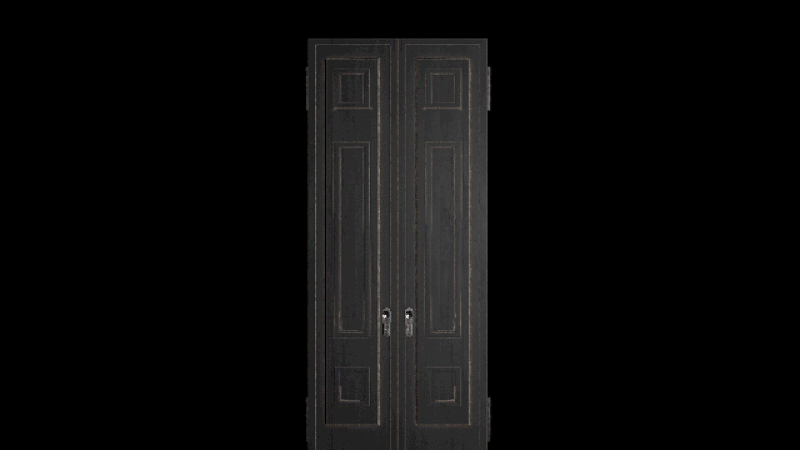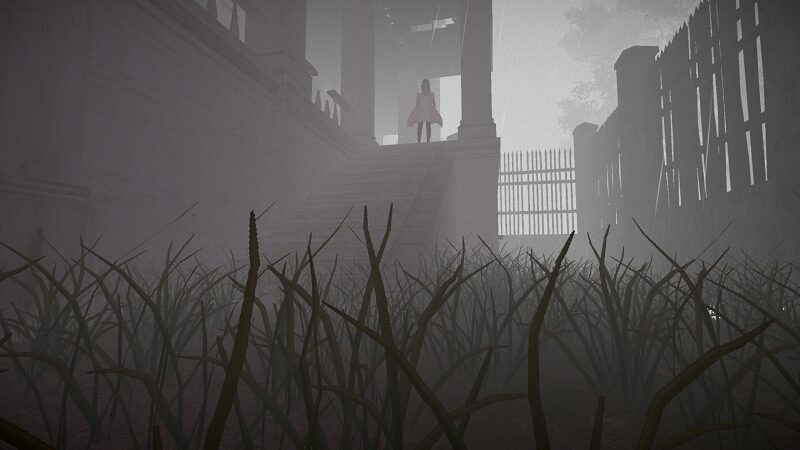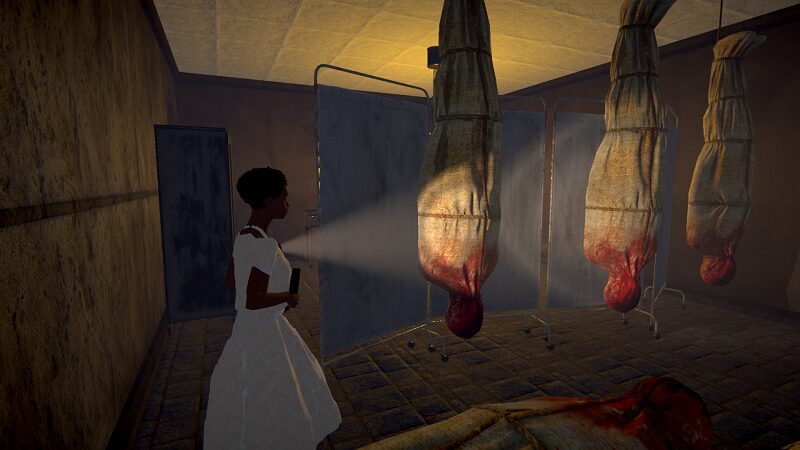
Back in 2019, solo indie developer Puppet Combo released what instantly became my favorite game of his, The Glass Staircase, which was originally released on PC and only available through his Patreon or itch.io pages, somewhat limiting the audience for such a great game.
As the game’s fifth anniversary approaches, the decision was made to finally bring the game to consoles, along with a few updates and improvements. I got the chance to dive back into the story to see whether the game stood out among the many other low-poly survival horror titles released since its debut, and I also wanted to see how the new changes affected the overall experience.

The Glass Staircase is a fixed-camera, PS2-style survival horror game that takes full advantage of the camera angles, including lots of surreal and foreboding cinematography and many surprises in the gameplay.
Its influences range from games like Silent Hill, Resident Evil, and Eternal Darkness to classic European horror films like House By The Cemetery, The Beyond, Suspiria, and many more. It all comes together to create an experience that blends the two mediums into a unique vision, which feels authentic and innovative in its own way.

This game represents a step forward for the modern-retro survival horror genre, since it was one of the first to expand into a full release, rather than being a short-form experiment, and features a narrative that slowly reveals details and follows a cast of characters. The story may seem primitive in some ways, but it strikes a perfect balance, feeling like a mix of an interactive movie from the 1970s or 1980s and the early survival horror narrative. It’s simple and direct, yet it has many moving pieces.
The game takes place over four days, with each day featuring a different character. The story’s details slowly unfold as the four girls explore a mansion and its surroundings and work together to escape their mysterious entrapment. Documents scattered around the mansion reveal the truth about the strange place where they’re held captive and give clues as to who might be behind the loudspeaker voices they hear every morning.

The mansion features three main areas to explore, each with its own different vibe and surprises to discover. This helps the game feel unexpectedly large and fleshed out in a way that many from this genre do not. It also adds to the immersion that feels authentic to the survival horror titles from the late 1990s and early 2000s. The first three chapters primarily focus on exploration with some light puzzle-solving, while in the final act, you’ll acquire a gun and journey into the basement to confront the lurking horrors.
The sound design and “cinematography” are excellent, creating a visual style that inspires dread and imagination with every camera angle, making you wonder what could be lurking around each corner or behind each door. It’s rare that you’ll ever feel safe at any point, since every area has an accompanying oppressive and ambient soundscape that makes it seem like you’re being watched with every step and that something could be waiting for you when you least expect it, much like the early Silent Hill games.
There are quite a few visual filters and options, where you can choose to play the game with a variety of aesthetics, such as old CRT televisions or film grain from retro media formats. You can, of course, choose to play a cleaner game, with much more detailed graphics and textures, which rounds out a very nice set of options that lets you tailor your experience.

There are a few new features implemented in the console versions, the first being native controller support. It’s quite solid across the board, giving a better experience than playing with a mouse and keyboard, while still feeling authentic to its origins, with tank controls being the only control method. While it can be argued that many modern systems don’t have the best D-pads to play tank controls with, once you get the sensitivity settings right for you, it should feel pretty similar to loading up a classic Resident Evil or Silent Hill game.
Achievements/trophies have also been added for the Xbox and PlayStation versions, which are fun little mini-quests of their own. They require very little to achieve but are a nice addition to the console ports.
Additionally, there’s an auto-aim feature when using the gun and even though it’s not quite as useful or snappy as the auto-aim in early tank control games, it does help a little, since the aiming is otherwise pretty awkward on its own. This feature only really works if you’re already facing in the general direction of the enemy, so it’s not too overpowered by giving you a large advantage.

On top of this, there are a handful of small bug fixes and/or cleaning up around the edges, and combat encounters were adjusted to be less difficult in general, which is a huge help for new players.
The same auto-save checkpoints that were in the original PC release are also present, plus a few more that have been added for the quite lengthy last chapter of the game. Even so, while these new checkpoints are helpful, there’s still a bit of a crazy difficulty curve with the final checkpoint of The Glass Staircase.
The length and difficulty of this particular moment do cause a massive difficulty spike, so retries can get frustrating, though it’s still better than it was in the original release. However, it’s about the only negative thing I have to say about the experience, aside from a few of the other assorted bugs that have persisted from the PC version.

The game will likely take around two to three hours to complete, depending on how many times you end up dying in the last chapter. It also fits right in with its inspirations, where you can certainly finish the game more quickly once learning where to go, but it’s overall a satisfying experience that has stuck with me since 2019 and still holds up today. Even with its small frustrations, this is a highly recommended experience for those who love the early 3D era of survival horror titles.
The Glass Staircase really is one of those indie games that stands out from the crowd in the early renaissance of retro survival horror, so you can’t go wrong here if you’re looking for an authentic-feeling early 2000s release, especially for the low price tag.
Unravel the mystery of The Glass Staircase on May 24th on Xbox Series X|S, Xbox One, PS5, PS4, and Nintendo Switch, and experience a modern classic of retro survival horror.
 (9 / 10)
(9 / 10)
Amazing
 (9 / 10)
(9 / 10)Rely on Horror Review Score Guide
A review code was provided by the publisher for Xbox Series consoles.

 IDOLxISxDEAD
IDOLxISxDEAD


